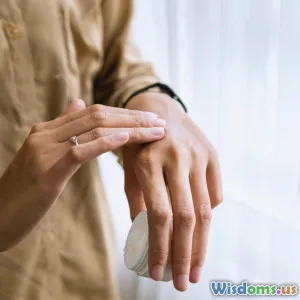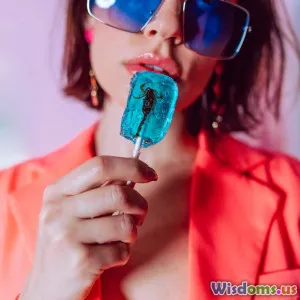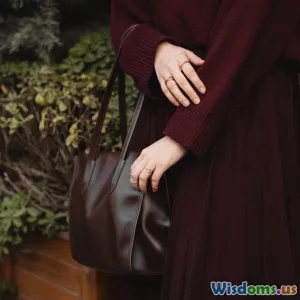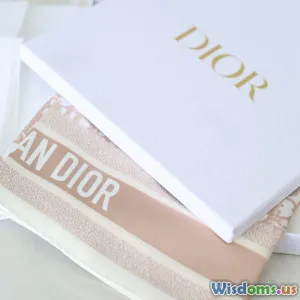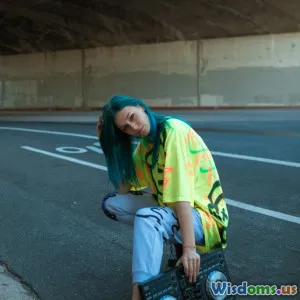
How Korean Skincare Became a Global Beauty Revolution
8 min read Discover how Korean skincare transformed global beauty with innovative products, unique rituals, and cultural influence. (0 Reviews)
How Korean Skincare Became a Global Beauty Revolution
Introduction
In the vast world of beauty, few trends have captured the global imagination like Korean skincare. What started as a niche market rooted deeply in South Korea’s cultural values around health and appearance has evolved into a worldwide phenomenon, influencing consumers, brands, and even the format of beauty products internationally. From inventive formulations to celebrated multi-step routines, Korean skincare has transformed how we view and approach our skin’s wellbeing. But how did this revolution begin, and why does it continue to gain momentum? This article unpacks the origin, innovation, and cultural underpinnings of Korean skincare and explains how it has reshaped the global beauty landscape.
The Origins of Korean Skincare Innovation
Korean skincare’s journey is a perfect blend of tradition and cutting-edge science. Historically, South Korea embraced holistic health philosophies where beauty was seen as a reflection of internal balance and vitality. Traditional Korean herbal remedies and natural ingredients laid the foundation for the industry.
Fusion of Science and Tradition
The 1990s marked the arrival of new research facilities and collaborations with pharmaceutical companies in South Korea, leading to advanced bio-engineered skincare ingredients. Brands began integrating ancient botanical extracts with modern techniques, catalyzing breakthroughs like snail mucin, propolis, and fermented ingredients that promoted skin regeneration and enhanced absorption.
Early Global Footprints
The early 2000s saw Korean drama and pop culture (“Hallyu Wave”) gaining international traction. Celebrities showcased flawlessly radiant skin, sparking curiosity worldwide. This cultural export indirectly fueled global interest in K-beauty products and routines.
Key Elements That Define K-Beauty
1. The Multi-Step Skincare Routine
Unlike Western skincare’s focus on minimalism, the multi-step regimen—often involving 10 or more steps—is a cornerstone of K-beauty. This elaborate process includes cleansing (double cleanse with oil and foam), toning, essence, serums, ampoules, emulsions, moisturizers, and sun protection. The philosophy emphasizes gradual nourishment and maintenance.
2. Innovative and Gentle Ingredients
Korean brands prioritize gentle yet effective formulations with an array of unique ingredients. Snail mucin, for example, is renowned for promoting collagen production and healing, celebrated by brands like COSRX and Mizon. Another staple, Centella Asiatica, is widely used for its calming and anti-inflammatory effects.
3. Lightweight Textures and Layerability
Unlike heavy Western creams, Korean skincare products often feature lightweight gels, essences, and emulsions, designed to layer without clogging pores. This appeals to consumers looking for efficacy coupled with comfort.
4. Packaging and Branding
Korean products frequently sport playful, aesthetically pleasing packaging—think colorful tubes with whimsical designs or minimalist sleek bottles. This not only draws consumer attention but enhances user experience, contributing to consumer loyalty.
The Role of Social Media and Digital Culture
The democratization of beauty through platforms like YouTube, Instagram, and TikTok allowed K-beauty aficionados to share detailed reviews, tutorials, and ingredient insights globally. Influencers such as Joan Kim and Edward Kim have millions of followers who ardently seek K-beauty recommendations.
The rapid spread of honest consumer feedback contrasts with traditional advertisement, creating a community-driven trust in Korean skincare products. Moreover, the openness toward transparency in ingredient disclosure and product testing fosters deeper brand credibility.
International Brands and Market Penetration
Many Korean companies embraced international markets through collaborations and setting up flagship stores abroad. Major players include:
- Innisfree: Leveraging its natural Jeju island ingredients, it successfully entered U.S. and European markets.
- Laneige: Known for hydration-focused products such as the Water Sleeping Mask, its acquisition by L'Oréal signifies growing Western interest.
- Dr.Jart+: Famed for its innovative dermatological cream and BB cushions, Dr.Jart+ broke into global retailers like Sephora.
The rise in localized distribution centers and partnerships with global retailers like Ulta and Sephora made products more accessible and competitively priced.
Data Supporting Growth
According to Statista, the Korean skincare global market value was estimated at over $13 billion in 2021 and projected to exceed $21 billion by 2027, underscoring increasing demand. Nielsen demonstrated that 48% of worldwide beauty consumers tried K-beauty products at least once by 2020.
Cultural Influence Beyond Products
K-beauty’s impact extends deeper than cosmetics—it reflects and promotes a skincare culture emphasizing self-care as an intentional, enjoyable ritual rather than an obligatory chore. This mindset shift encourages consumers worldwide to invest time and attention to skin health.
Additionally, K-beauty’s approach fosters inclusivity. Products cater to diverse skin sensitivities and emphasize gentle care, breaking stereotypes about beauty and flawless skin as unattainable.
Industry experts like Charlotte Cho, author of "The Little Book of Skincare," highlight that Korean beauty rituals foster confidence, patience, and appreciation for gradual improvement—life lessons packaged within beauty regimes.
Challenges and Future Outlook
Despite phenomenal success, Korean skincare faces challenges such as intense competition, copycat products, and evolving consumer preferences. There is also rising scrutiny over sustainability, ethical sourcing, and packaging.
Nonetheless, innovation continues with trends like eco-conscious formulations, waterless products, and tech-infused skincare devices rising from Korea’s innovative ethos.
Experts predict Korean skincare will keep evolving, blending science, tradition, and sustainability to remain a global benchmark.
Conclusion
Korean skincare's global ascent is a remarkable case of cultural authenticity combined with innovative mastery. Its distinctive multi-step routines, revolutionary ingredient use, and digital-savvy marketing reshaped beauty expectations worldwide. For consumers, it offers more than products—it delivers a lifestyle and philosophy viewing skincare as both art and self-love. As K-beauty continues to evolve, it not only inspires healthier skin but also a mindful beauty culture destined to influence the global beauty industry for years to come.
Whether you are a skincare novice or a seasoned enthusiast, exploring Korean skincare unlocks fascinating insights and practical tools that can truly transform your approach to beauty.
References:
- Statista. (2021). Size of the Korean skincare market worldwide.
- Charlotte Cho, "The Little Book of Skincare." 2015.
- Nielsen Global Survey on beauty consumer trends, 2020.
- Innisfree, Laneige, and Dr.Jart+ official websites and investor reports.
- Social media analytics of prominent K-beauty influencers.
Explore your journey with K-beauty—it’s more than skin deep.
Rate the Post
User Reviews
Popular Posts










